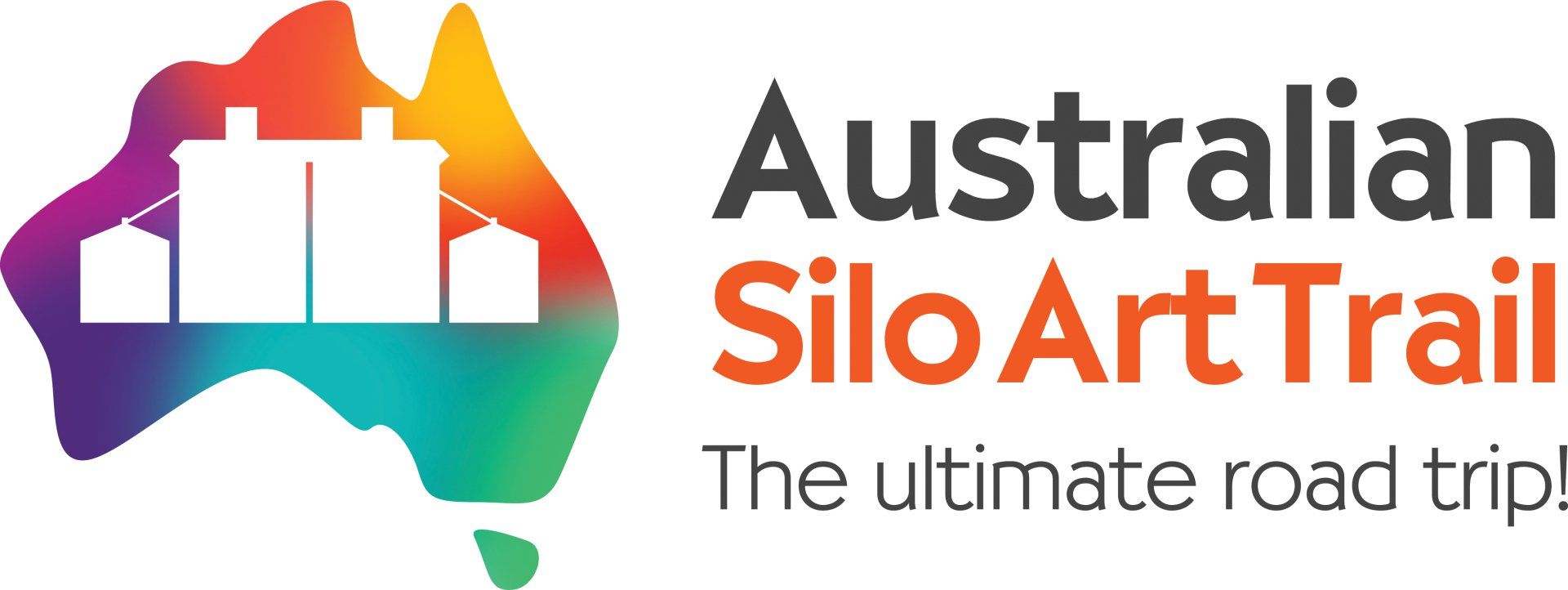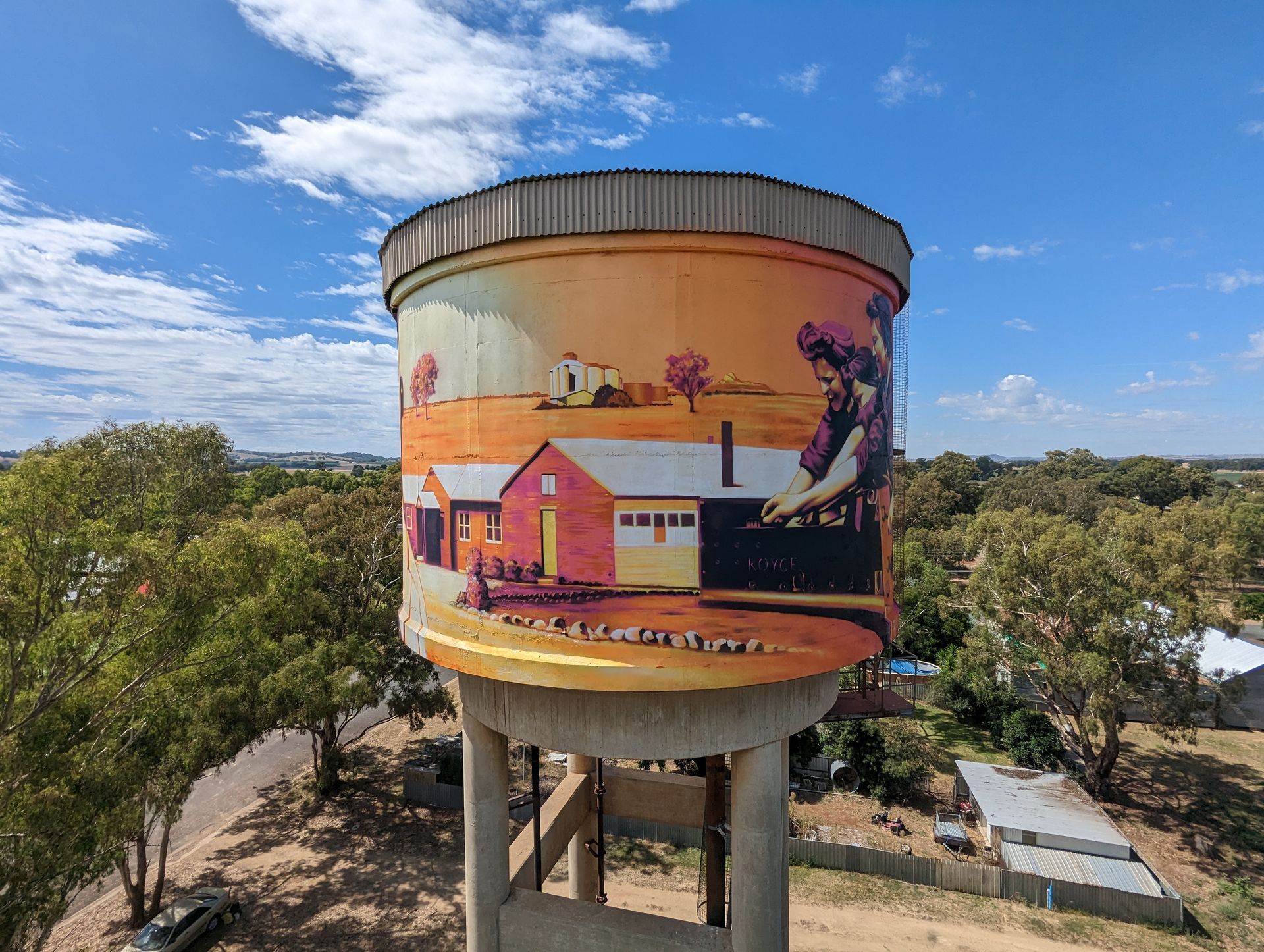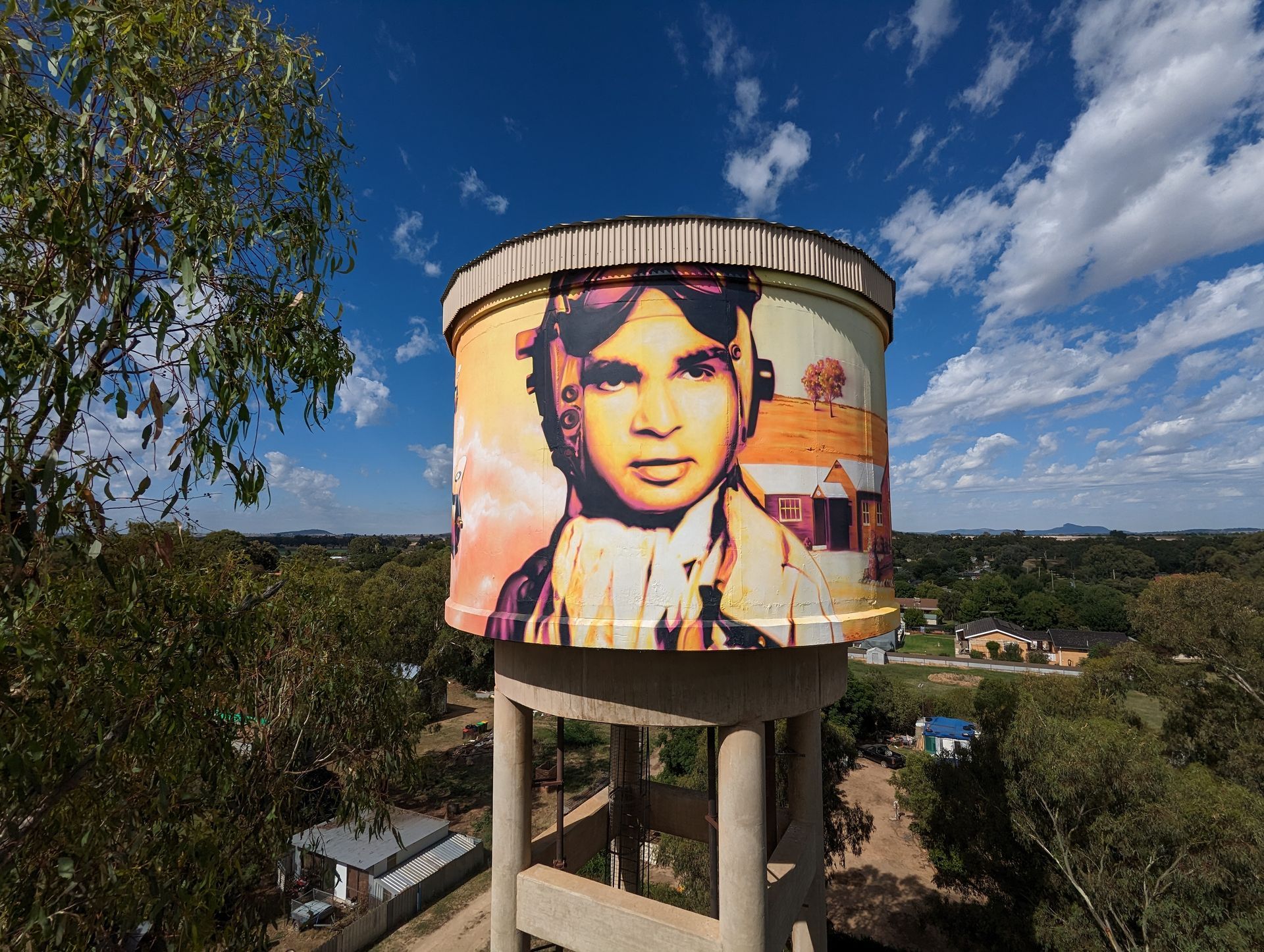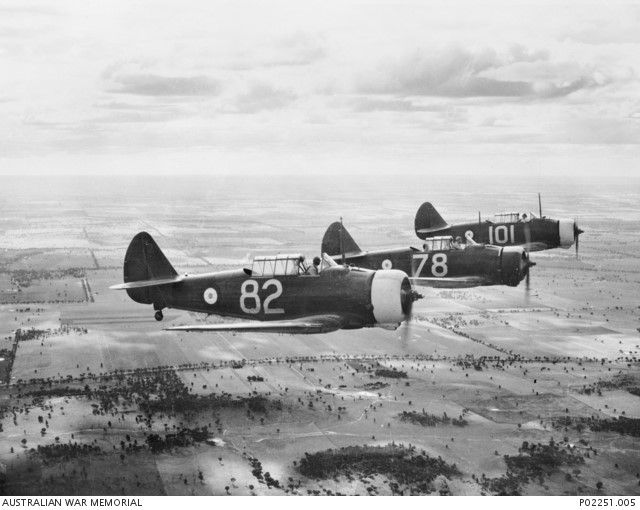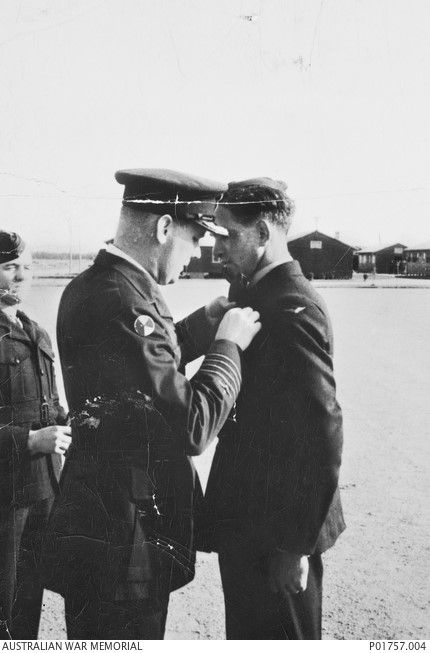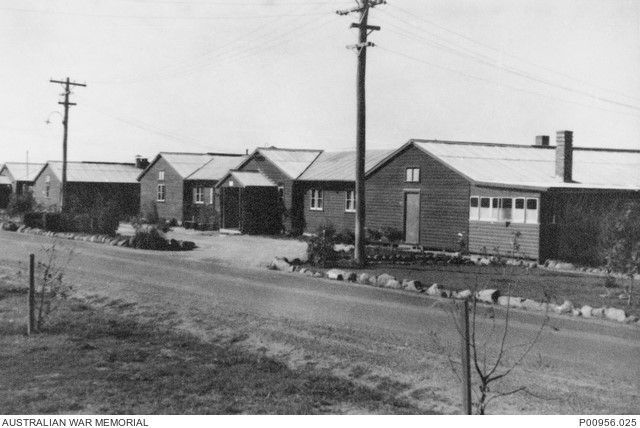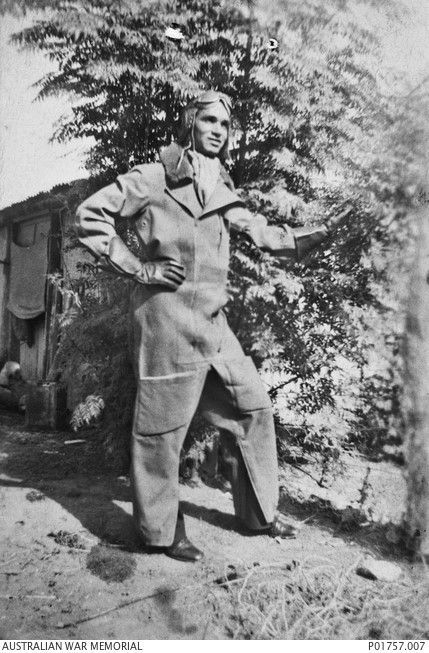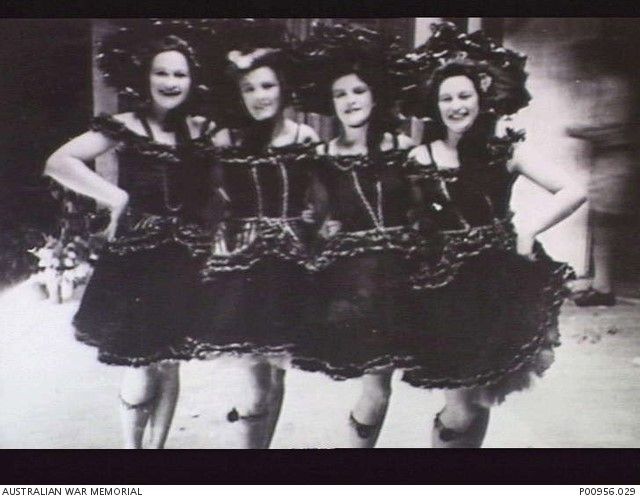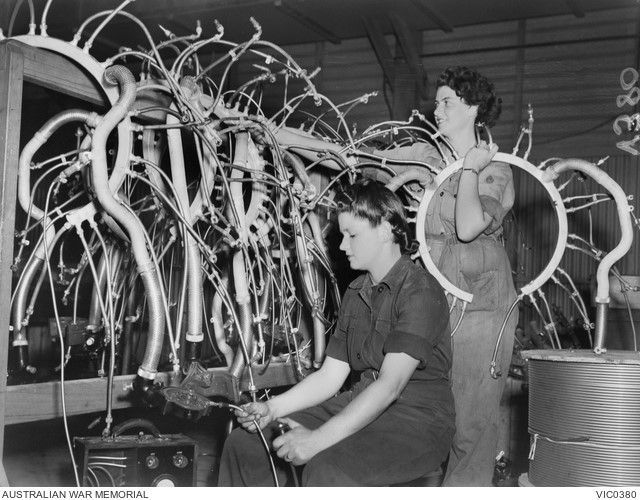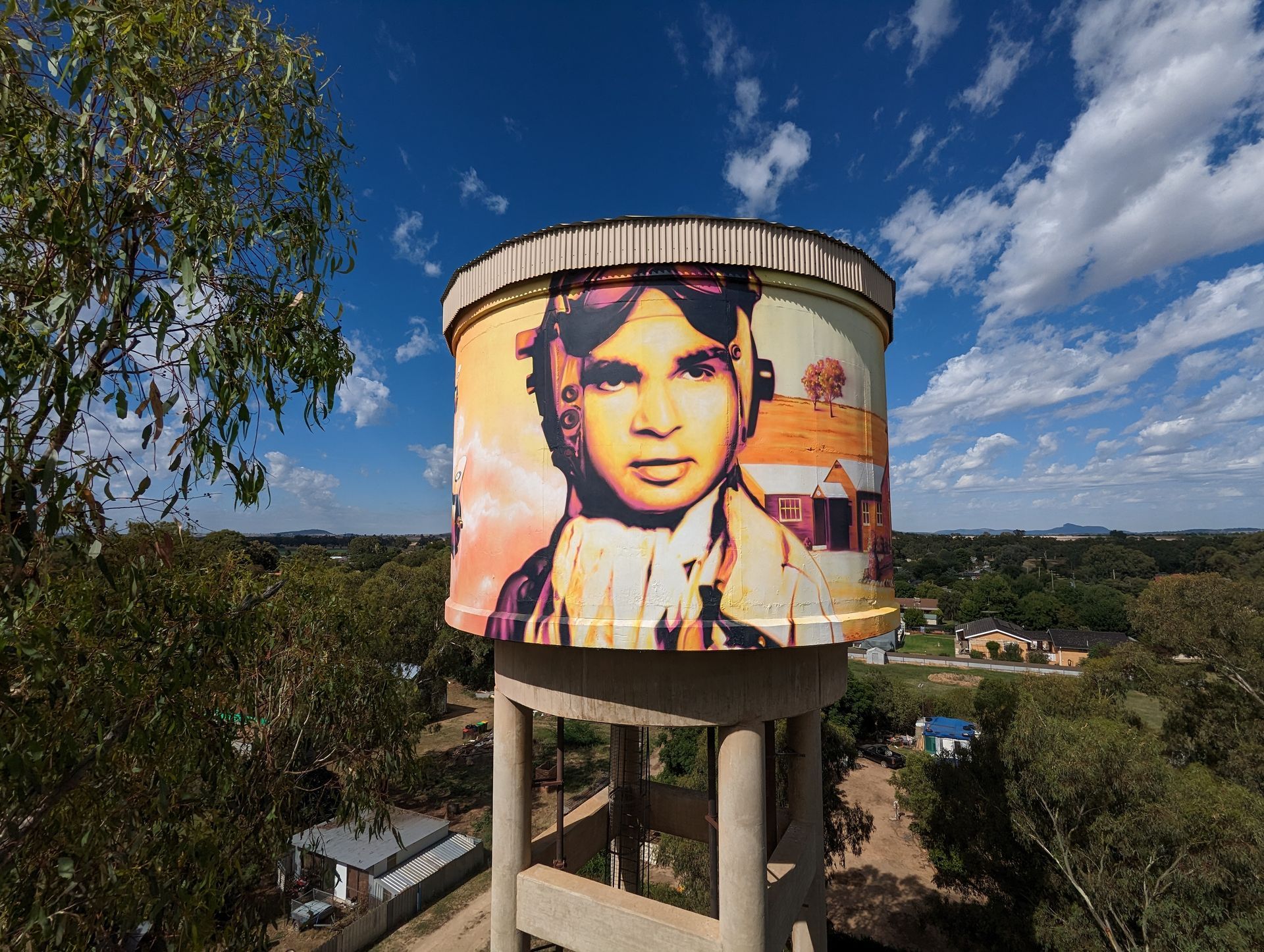
Photo by: Damien Mitchell
Uranquinty Water Tank Art - New South Wales
Artist: Damien Mitchell
Location: The water tower is situated on the corner of Uranquintry and Best Streets, Uranquinty NSW
Spinning Photos by Damien Mitchell

Photos by Australian War Memorial History of Uranquinty
The Uranquinty Water Tank Art was painted by artist Damien Mitchell in February 2023
The mural depicts Aboriginal fighter pilot Len Waters, Australian Wirriway Aircraft, female mechanics working on an engine and the local barracks used during WW2. Damien has painted with a mix of acrylic and spray paint.
Len Waters Fighter Pilot WW2
Len Waters was Australia's first and only known Indigenous fighter pilot during World War II.
He achieved the unthinkable, flying an elite fighter Kittyhawk — aptly named Black Magic — for the Royal Australian Air Force. Mr. Waters flew 95 operational sorties with 78 Squadron from 1943 to 1945. When he returned home
Len Waters earned his pilot wings in 1944 flying the CAC Wirraway and later flew the P-40E Kittyhawk in action over the South-Pacific.
He was stationed on the island of Noemfoor off Dutch New Guinea where he flew on more than 90 missions before being deployed to air bases in Borneo.
On one flight over the Pacific his aircraft was struck by a Japanese 37mm cannon shell that wedged itself in the cockpit without detonating. Len was able to safely navigate with the unexploded ordnance in the cockpit for several hours before landing with the shell, the plane and himself intact.
Len Waters became a 'missing man' in Australia's wartime history.
It remained this way until his death in Cunnamulla, in Western Queensland, in 1993.
WAAF Aircraft Women
Over a quarter of a million women served in the Women's Auxiliary Air Force (WAAF). No fewer than 183,317 were volunteers with a further 33,932 women called up from December 1941. The majority were aged between 18 and 40.
Officers and airwomen were selected by interview but unlike the First World War, training was provided. Some trades required several weeks attendance at specialized schools before posting took place.
From 1943 to 1944, over 1,000 women flew over 60 million miles ferrying aircraft and personnel, towing targets, and other transport duties.
Wirriway Aircraft
The CAC Wirraway (an Aboriginal word meaning "challenge") became Australia's primary trainer aircraft and a general-purpose military aircraft manufactured in Australia between 1939 and 1946. It was an Australian development of the North American NA-16 training aircraft. The Wirraway has been credited as being the foundation of Australian aircraft manufacturing.
History of Uranquinty
Uranquinty, an unusual name and a unique place on the map. This name is etched in the memory of over 2,000 pilots and Airforce personnel who trained there from 1941 to 1958 as well as the 28,000 displaced persons who passed through the migrant camp from 1948 to 1951.
The village of Uranquinty began, like most other settlements throughout the area, because of a need for expansion and settlement of new lands during the 1800s and the building of the railway from Wagga Wagga to Albury.
Uranquinty is an aboriginal word meaning Yellow Box Tree and Plenty of Rain.
The town itself had three names. Initially it was called Glenrouth and proclaimed a village on 22 September 1888. In 1889 the name was changed to Uranquintry and then officially altered again in 1966 to Uranquinty, although residents have referred to the last name since the turn of the century.
